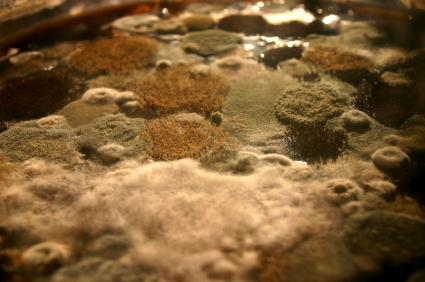 Most of us are set on auto-pilot when we’re vacuuming our home. We run through the motions without thinking about what we’re cleaning up or where its going.
Most of us are set on auto-pilot when we’re vacuuming our home. We run through the motions without thinking about what we’re cleaning up or where its going.
Plug in, switch on, use. Simple right? But what about after we’ve used our vacuums? What happens to all the stuff we just picked up off the floor – or better yet, what did we pick up off the floor?
Many of us go further still with this bad habit – not only are we unaware of what we’re cleaning, we’re unaware that we’ve left a pile of dirt sitting and festering in our vacuum, and in our home. If we consider the fact that vacuums don’t have an air tight seal preventing picked up particles from floating back out, we begin to start seeing the importance of realizing what’s living inside our vacuums.
To find out what’s living inside your vacuums, you have to start by looking at what’s on the surface. And if you start thinking back to people and pet traffic, food spills, and odors – we start seeing what a scary picture this really is.
What’s Living in Your Carpet?
Your carpet is not as clean as you’d like to think. Even on an otherwise clean and healthy looking carpet, a close up microscopic view of the surface would show legions of bacteria and micro-organisms scouring your carpet. If you start thinking about all the ways you use your carpet, you start seeing how troubling this can be.
We enjoy our carpets by lying on it, our children play on it, your belongings fall or rest on it. Nearly everything in your home touches (or will touch) the carpet at some point. Now we begin to see the importance of a clean carpet.
Scientists observe that even in carpets without any reported damage, there is the very real possibility of indoor fungal growth. They determine this by the amount of carbon dioxide released into the air by micro-organisms living in your furnishings. Simply, they breathe, they release carbon dioxide, and high amounts of repeated releases can result in indoor fungus.
So how can scientists figure out the respiration rate of tiny microscopic beings? Quite simply actually. Scientists can extract dust from the carpet surface and test it to arrive at a pretty accurate estimate of the number of micro-organisms based on the respiration rate evident in the dust.
In one study, scientists analyzed these organisms by sprinkling dust samples on a special filter. The result of this test “revealed 18 species were living in the carpets.” Their findings also showed a frightening similarity between what’s crawling around in your carpet and what’s crawling around in soil samples.
Additionally, “the rate of respiration showed that the fungal species detected were living in the furnishings, and were highly metabolically active.”
What does this mean? This means that fungal micro-organisms can grow in your home even if your home has no moisture damage, has average indoor air moisture, and has no other traditional problem-causing situations.
So now you know – bacteria, fleas, mold, and other microscopic organisms can all thrive in your carpet. But the number one thing that every home has is dust…and with dust come the notorious dust mites.
What is Dust?
Even the cleanest home has dust. The National Institute of Standards and Technology has even come up with a very scientific term for this: “standard house dust”. And yet, even with this basic element in every home, scientists stress the importance of home dwellers to realize that even this ‘standard house dust’ can be host to harmful chemicals.
In collaboration with the E.P.A, scientists collected dust from vacuum cleaner bags in home, hotels/motels and at cleaning services. With a sample of collection from several states, scientists then filtered and analyzed the samples with test results confirming a minimum of 33 harmful toxins. Another test into this matter revealed over 80 harmful chemicals.
Clearly, tests are showing that there are harmful contaminants living in your carpets and then transferred to your vacuum cleaner – where many of us leave them to thrive multiply and escape back into the air. So what exactly is in dust that is a living breathing invader? Dust mites.
What are dust mites?
The dust mites are microorganisms living on the dust particles. They eat mainly dead human skin cells. And considering that dead human skin cells comprises about 70% of all household dust, we quickly begin to see how we’re creating an environment in which dust mites can thrive freely.
If we take in the respiratory rate, and the fact that in our vacuum we’ve clumped both mites and food supply in lock stock barrel, we begin to realize the hazards of not cleaning out our vacuums.
How dust mites make you sick
Many people believe they have an allergic reaction to dust. However, the truth of the matter is that it isn’t so much the dust or dust mites you’re allergic to. The thing your sinuses are rattling in response to are dust mite excrements. Dust mites produce ridiculous amount of droppings. Considering they live up to 15 weeks, dust mites can produce up to 300 their weight in bodily waste.
Their by products are so small, that these excrements end up being part of the in-house air. It is this dust-mite excrement air that you’re then breathing into your lungs and having strong allergic reactions to.









Wow! It’s so surprising what kinds of organisms are living right under your nose…literally!
Whoa – that’s really gross! I’m super-allergic to dust so that definitely isn’t good
I love my cleaner. I will not buy another cleaner that does not have a replaceable bag. I feel like it is much cleaner and better for me.